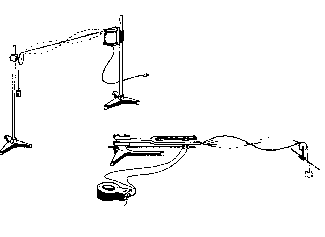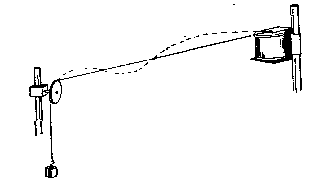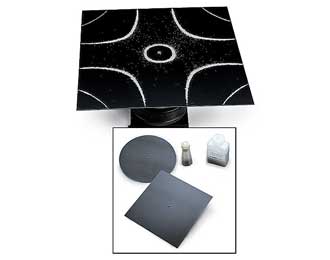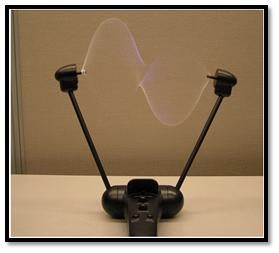W.2(1) – Vibrations in a String – Melde’s Experiment
An electrically driven oscillator (60 Hz) has a string attached to it and stretched across to a small bearing wheel. Different masses are hung to the end of string at small bearing. As the oscillator is turned on, standing waves of many orders can be obtained by varying the weight and/or the sring’s length.

W.2(2) – Standing Waves Across Two Different Mediums
Using the same set-up of the previous demonstration i.e. Melde’s Experiment, the behavior of a wave travelling through different mediums, can be observed. To the string attached to the electric oscillator, another string of different mass is tied. A wave travelling through the first string will change frequency and amplitude as it goes through the second one.

W.2(3) – Chladni’s Sand Figures
The Chladni Plates kit includes a 24cm X 24cm square plate, a mechanical wave driver, a sine wave generator and extra-fine sand. The sand is sprinkled on the plate and the wave driver allows continuous vibration to be produced at measurable frequencies. The sand collected produces Chladni’s Sand figures. A series of nodal lines appearing at the points of no vibration.
Click here to see a video clip of this demo.

W.2(4) 3-D Standing Wave Machine
Standing waves are created by adjusting the speed of the two motors and the distance between them. In the dark, light from red, green and blue LEDs allows a full spectrum of color.

